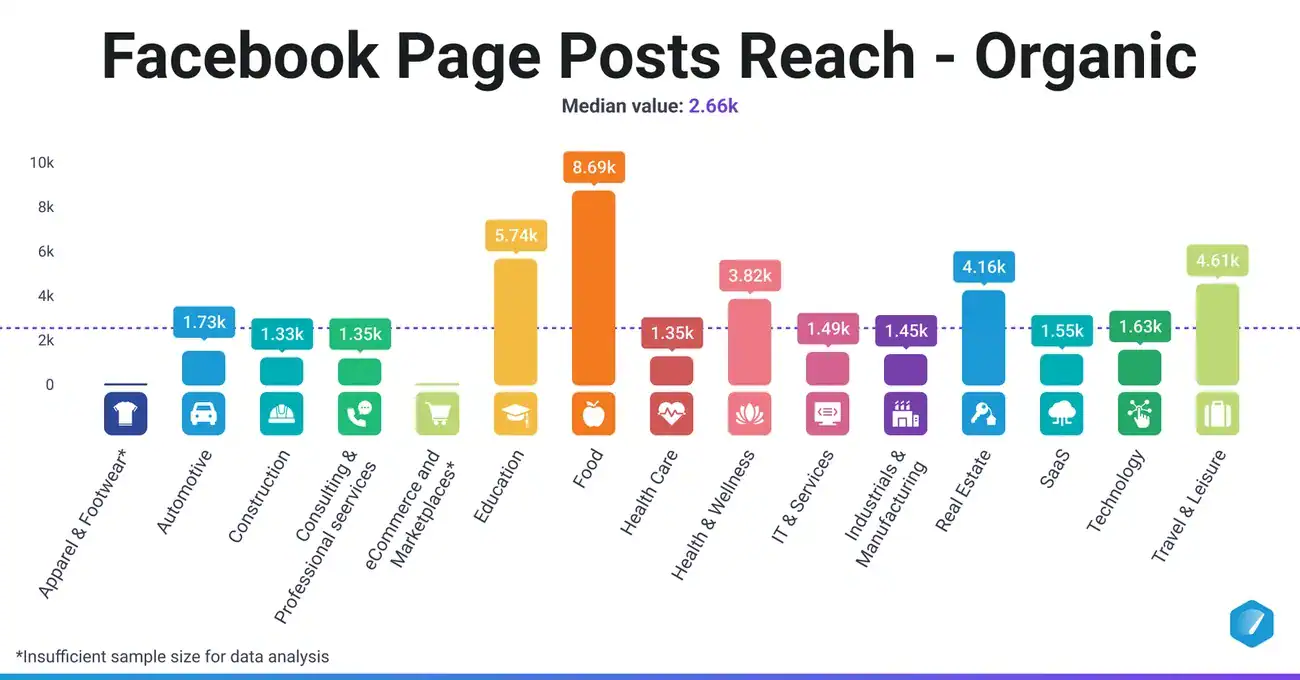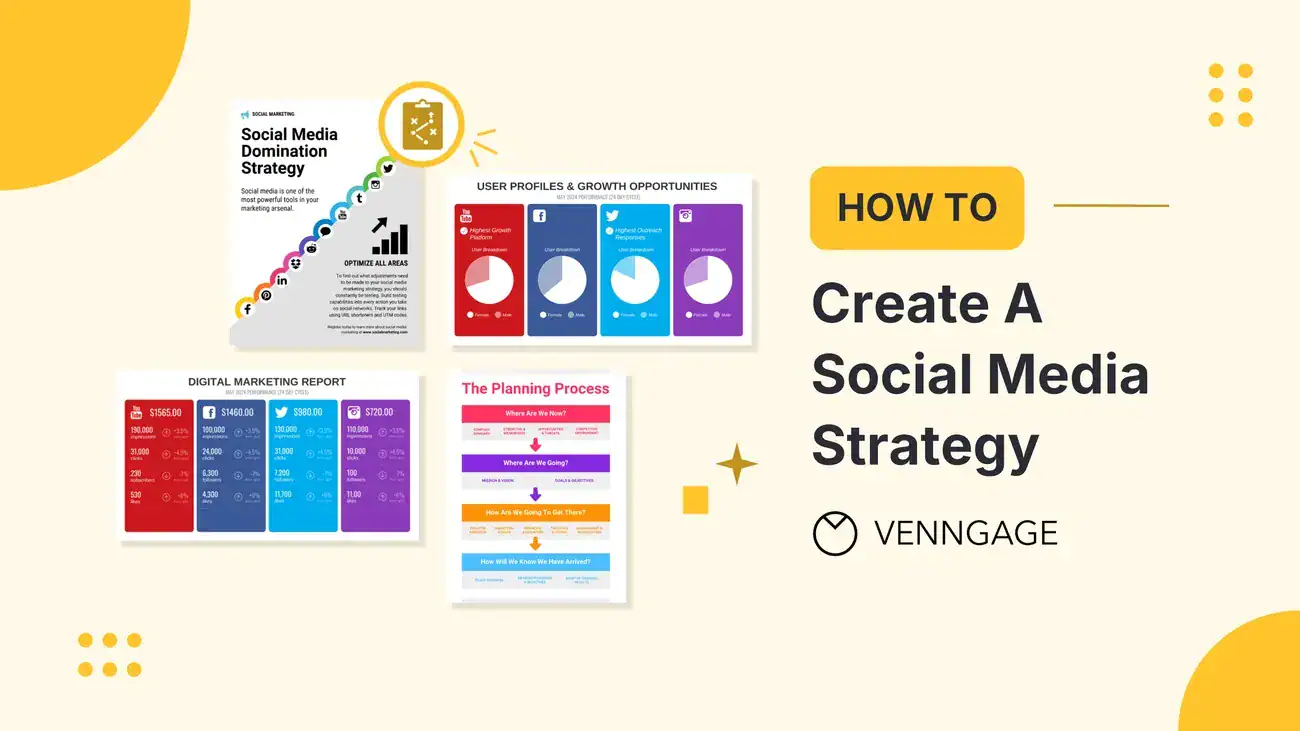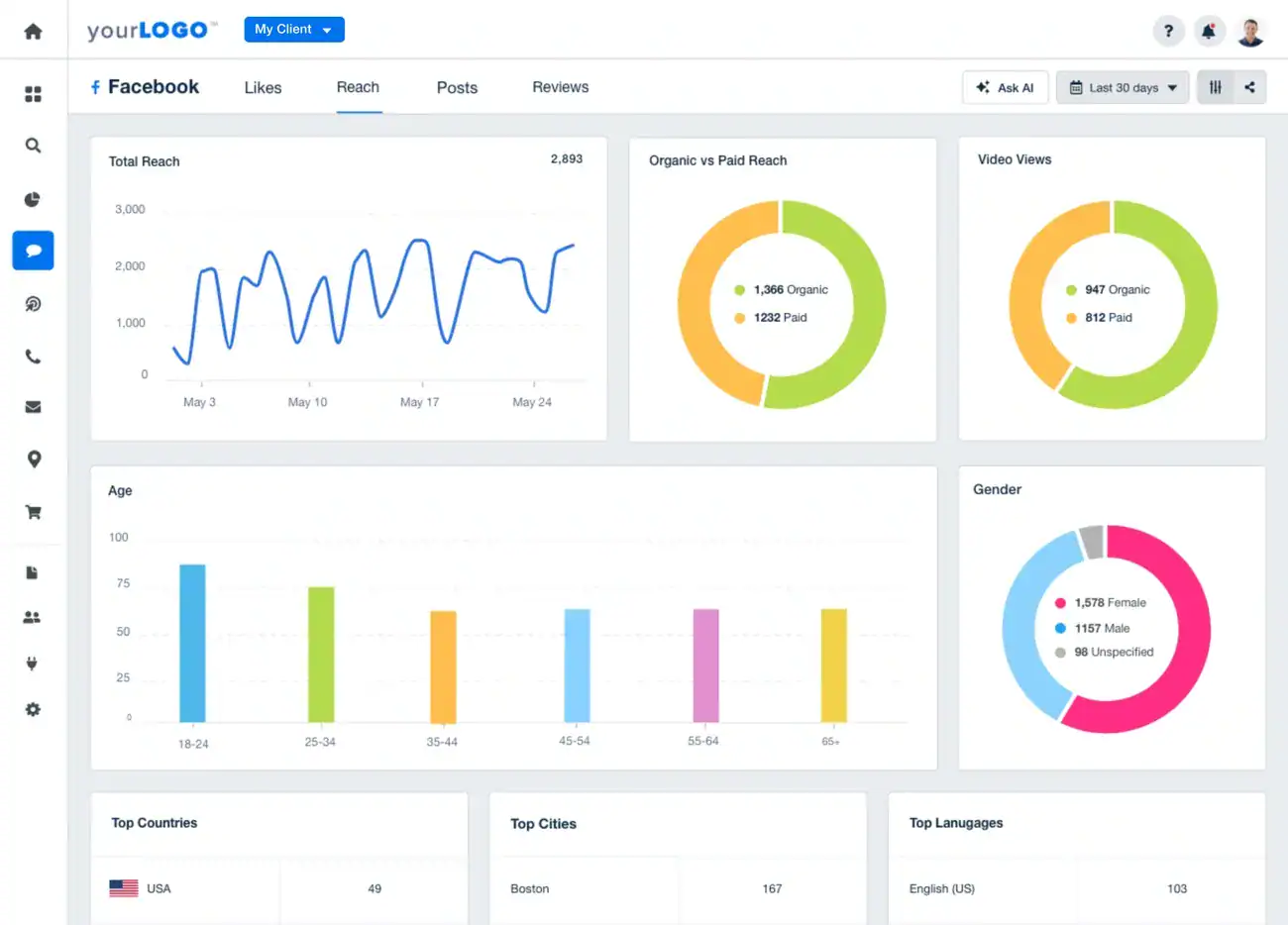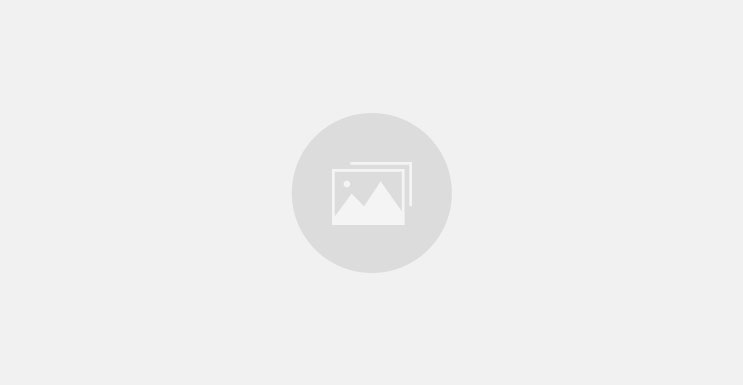Here’s a shocking fact – the average Facebook Page reaches only 1.2% of its followers organically.
The platform’s algorithm now favors posts from friends and family over business content, which makes growing a Facebook page organically quite challenging. Most Facebook posts reach barely 5% of a page’s followers. This happens even with more than 3.96 billion active social media users worldwide.
Facebook’s algorithm makes its biggest decision about your post within the first 30 minutes. The platform sees broad appeal when your content gets meaningful engagement from just 3-5% of its original audience during that window. Your success on Facebook depends on understanding reach metrics and how to improve them to build better lead generation and conversion funnels.
We tested and found eight proven methods that boost your Facebook page’s organic reach. This piece will show you these expert-tested techniques to break through algorithm restrictions and get more eyes on your content – without spending money on ads.
Understanding Facebook Reach
You need to learn what reach means and why it matters before you can grow your Facebook page organically.
What does reach mean on Facebook?
Facebook reach shows how many different users see your post or page content, even if they don’t interact with it. You can think of it as the size of your content’s audience. A reach of 100 people means exactly 100 people viewed your post.
Facebook measures reach in specific time periods (usually 2-day, 7-day, or 28-day windows). There’s no such thing as an overall reach metric. Facebook splits reach into two main types:
- Post reach: The number of unique users who saw a specific post in their news feed
- Page reach: The total number of users who viewed your page
These differences help you track how well your content spreads on the platform.
Reach vs impressions vs engagement
People often mix these metrics up, but they measure different aspects of your Facebook performance:
Reach counts unique viewers of your content. Someone who looks at your post five times still counts as one reach.
Impressions track how many times your content showed up on screens, including multiple views from the same person. This is a big deal as it means that impressions will always be higher than reach.
Engagement shows actual interactions with your content—reactions, comments, shares, and clicks. Reach tells you who saw your content, while engagement reveals who cared enough to take action.
Why organic reach is declining
Over the last several years, organic reach has been dropping on Facebook. Two main factors explain this trend:
Content creation has exploded everywhere. Users see up to 1,500 potential stories in their News Feed each time they log in—this number jumps to 15,000 for people with lots of connections. Facebook users’ Page likes grew by more than 50% in just one year. This creates fierce competition for visibility.
Facebook’s algorithm focuses on relevance. Instead of showing all possible content, News Feed displays about 300 stories from thousands of options. The algorithm ranks content based on engagement levels, quality, and user priorities. Posts that don’t get much interaction simply disappear from view.
This competitive landscape means businesses must get creative to stay visible without depending only on paid promotion.
Types of Facebook Reach Explained

Image Source: K6 Agency
You’ll craft better strategies to grow your Facebook page organically by understanding different types of Facebook reach. The platform’s reach system has several distinct categories that affect your content’s visibility in ways many people don’t realize.
Organic reach
The number of unique users who see your content without paid promotion represents organic reach. Your posts show up naturally in a follower’s News Feed based on Facebook’s algorithm, and this counts as organic reach. Getting organic reach has become harder yet more valuable because Facebook’s algorithm customizes each user’s feed based on their interests and behavior. Businesses now need to work harder to earn visibility since Facebook gives priority to content from friends and family.
Viral reach
People see your content through viral reach when others participate with it. A user’s friend likes, comments, or shares your post, which makes it appear in news feeds beyond your direct audience. Viral reach creates a ripple effect – your followers’ interactions with your content turn their networks into potential viewers. Your content’s visibility grows without extra cost through this type of reach.
Paid reach
The number of unique people who see your content through sponsored distribution makes up paid reach. Your content shows up in targeted users’ timelines when you pay for Facebook ads or boost posts. Facebook marks these posts as “sponsored” in users’ feeds. Paid reach gives you predictability and precision that you can’t get with organic methods, especially as more businesses compete for attention.
Post reach vs page reach
The number of unique users who saw specific content in their News Feed measures post reach. Page reach tracks how many people viewed any of your page’s content during a set time. To cite an instance, you might see high post reach but low page reach if you don’t post often. Your post reach might be lower but overall page reach higher if you post several times daily. These differences help you review your Facebook performance metrics better.
8 Proven Ways to Grow Your Facebook Page Organically

Image Source: Venngage
Smart strategies help your Facebook page grow better than hoping for luck. These eight methods will help your page thrive without paid advertising, based on expert testing and informed results.
1. Post consistently and at the right time
Facebook success depends on consistency. Regular posts keep your page active and your audience aware of your presence. Most businesses should post twice a week. Research shows the most effective posting times fall between 8-11 AM on weekdays, especially Monday through Friday from 9 AM-3 PM.
2. Use videos and Facebook Live
Facebook gives priority to video content, with live broadcasts leading the way. Live videos create six times more interactions than standard videos. Pages with 50,000 likes have reached over a million people through live content. Your reach grows exponentially with longer videos (5-30 minutes) as more viewers join.
3. Encourage meaningful interactions
Facebook’s algorithm rewards content that creates conversations. Posts with active discussions in comments appear higher in News Feed. Questions, polls, and Q&A sessions prompt genuine responses from your audience. Facebook reduces the visibility of “engagement bait” that pushes people to comment artificially.
4. Share user-generated content
User-generated content (UGC) creates trust and authenticity. Ask permission to showcase content when customers tag your business or use your branded hashtags. This builds community spirit and shows real people’s experiences with your products.
5. Join and involve yourself in Facebook Groups
Your page can now participate in groups. Share valuable insights and become a trusted expert in your field. Remember to follow group guidelines and add value instead of promoting yourself.
6. Repurpose high-performing content
Your best content deserves multiple formats. To name just one example, turn popular blog posts into videos, infographics, or live streams. This approach reaches different audience preferences and maximizes your content’s value.
7. Use hashtags strategically
Hashtags make your content easier to find on Facebook. Include 2-3 relevant hashtags in each post. Make them readable by capitalizing first letters (#TacoTuesday instead of #tacotuesday).
8. Avoid over-promotional content
The 80/20 rule keeps your audience interested—80% of content should educate, entertain, or inspire, while 20% promotes products directly. Too much promotion makes your page look spammy. Provide value first, then earn the right to promote your offerings.
Track and Improve Your Reach Over Time

Image Source: AgencyAnalytics
Your Facebook page’s organic growth needs focused work, given the platform’s algorithm limitations. We’ve explored proven methods that work despite the 1.2% average reach.
Facebook’s algorithm makes key choices about your content in the first 30 minutes after posting. When you implement these eight strategies, you can maximize those vital moments. Quality engagement beats quantity every time.
Success on Facebook builds on consistency. You can increase visibility by posting valuable content at peak times and using video, especially live broadcasts. On top of that, genuine conversations through questions and polls signal to Facebook that your content deserves wider distribution.
User-generated content and participation in Groups help magnify your organic reach and build real connections. High-performing content can be repurposed across different formats to reach audience segments with varied priorities.
The difference between reach, impressions, and engagement matters as you track progress. These metrics help you fine-tune your approach and identify what works best for your audience.
Facebook growth takes patience and persistence. Notwithstanding that, building an engaged community without paid promotion makes these efforts count. Start using these tested methods today and watch your organic reach soar past that 1.2% average.
Facebook’s landscape keeps changing, which makes organic growth challenging for businesses and content creators. You need patience and adaptability to succeed on this platform as algorithms change and user priorities evolve. The strategies in this piece will help you stay ahead of competitors who post randomly and hope for results.
Note that Facebook’s algorithm rewards content that builds real connections between users. Your focus should be on building a community instead of just getting more followers. Quality engagement beats vanity metrics to accelerate sustainable growth.
Regular analysis of your performance data is vital to improve your approach. Test different content formats, posting times, and ways to engage users. Small improvements in organic reach can lead to substantial audience growth over time.
Page owners often give up on organic strategies too quickly when they don’t see instant results. But those who stick through the original slow-growth phase often find their content gains momentum as the algorithm recognizes quality and engagement. Think of your Facebook strategy as a marathon rather than a sprint.
Your brand voice and audience needs should guide your organic growth efforts. You might feel tempted to follow trends or copy competitors, but authentic content that connects with your specific audience ended up performing best. Successful Facebook pages balance optimization with human connection.
The tactical approaches in this piece combined with consistent execution and informed improvements will position your page to realize its full organic reach potential. Your investment in organic growth creates genuine engagement that paid strategies alone cannot match.
Key Takeaways
Growing your Facebook page organically requires strategic consistency and understanding of the platform’s algorithm, which makes critical decisions about your content within the first 30 minutes of posting.
• Post consistently 2x per week during weekday mornings (8-11 AM) when engagement rates are highest
• Prioritize video content, especially Facebook Live, which receives 6x more interactions than regular posts
• Focus on meaningful conversations through questions and polls rather than promotional content (follow 80/20 rule)
• Leverage user-generated content and strategic group participation to build authentic community connections
• Track performance using Facebook Insights to identify top-performing content and refine your strategy over time
Success on Facebook requires patience and persistence, as the average page only reaches 1.2% of followers organically. However, quality engagement that sparks genuine conversations signals to Facebook’s algorithm that your content deserves wider distribution, creating a multiplier effect that can significantly expand your reach without paid promotion.
FAQs
Q1. What are some effective ways to grow a Facebook page organically?
To grow your Facebook page organically, focus on posting high-quality, engaging content consistently. Use a mix of content types including videos, especially live videos. Encourage meaningful interactions by asking questions and responding to comments. Join and participate in relevant Facebook Groups, and share user-generated content to build community.
Q2. How often should I post on my Facebook page for optimal growth?
For most businesses, posting about twice a week is recommended. The best times to post are typically weekday mornings between 8-11 AM, particularly Monday through Friday between 9 AM-3 PM. However, it’s important to analyze your specific audience’s behavior to determine the optimal posting times for your page.
Q3. Why is my Facebook page’s organic reach declining?
Organic reach on Facebook has been declining due to increased competition for News Feed space and changes in Facebook’s algorithm. The platform prioritizes content from friends and family over business pages. To combat this, focus on creating highly engaging content that sparks conversations and encourages meaningful interactions among your audience.
Q4. How can I increase engagement on my Facebook page?
To increase engagement, create content that encourages interaction such as polls, questions, and live videos. Respond promptly to comments and messages. Share user-generated content to build community. Use Facebook Stories and experiment with different content formats. Remember to follow the 80/20 rule: 80% of your content should educate, entertain, or inspire, while only 20% should directly promote products.
Q5. How do I track the performance of my Facebook page?
Use Facebook Insights to track your page’s performance. Key metrics to monitor include reach, engagement, and follower growth. Analyze which types of content perform best and at what times. Use this data to refine your content strategy and posting schedule. Regularly review your performance and adjust your approach based on what works best for your specific audience.

